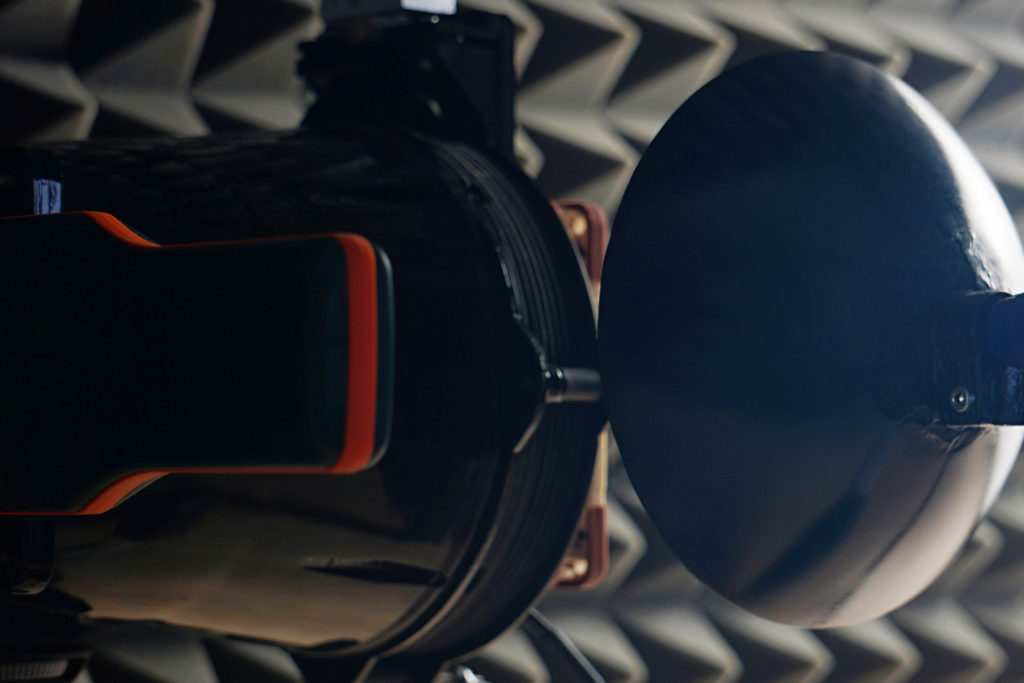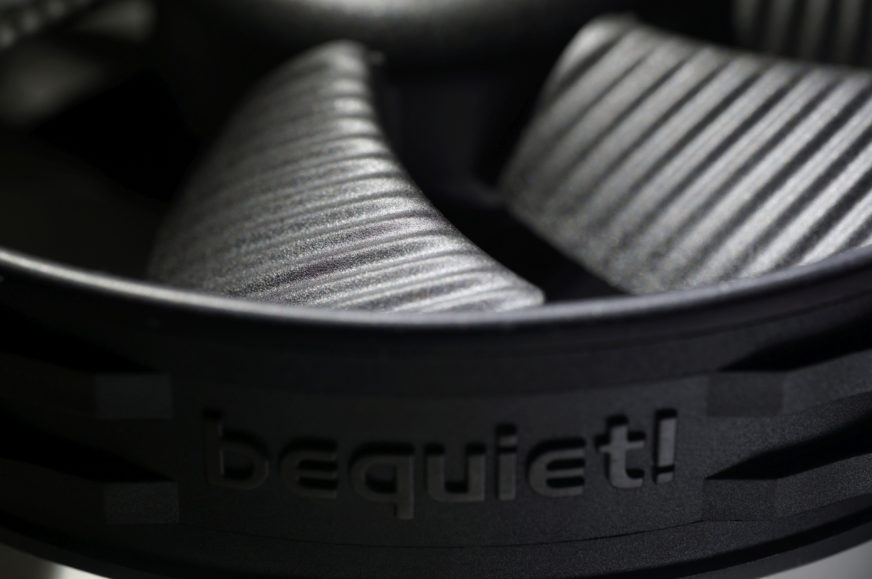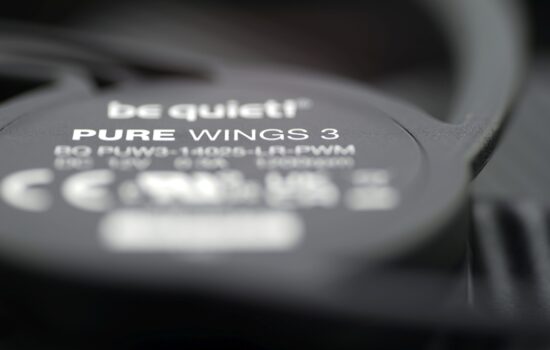Base 6 equal noise levels…
With the addition of the Shadow Wings 2 tests, you now have a full overview of the features of all unlit BeQuiet! fans in 120 mm format. Shadow Wings 2 is between Silent Wings 3 and Pure Wings 2 in terms of both price and design. In terms of efficiency, they are closer to the more expensive Silent Wings 3 and in certain situations they give top-notch results. Given the lower price, this can be a very attractive option, but there are some things to look out for.
Base 6 equal noise levels
There are several options by which to normalize the test modes for fans. In the previous chapter, we wrote that perhaps the least appropriate option is equal speed.
Settings according to the same static pressure or flow are for consideration, but we find it most sensible in the long term to normalize the measurement modes according to the same noise levels. Firstly because decibels are a logarithmic unit and all others scale linearly, but mainly because you can orientate fastest by the same noise levels. The easiest way to compare the efficiency of fans is just by how they perform at the same sound pressure level. Of all the options, this is the one that most people can best imagine and bounce off of when considering other variables.
The individual noise level modes are adjusted from low levels continuously to higher levels. All users will find their results in the tests, regardless of whether they prefer very quiet operation at the limit of audibility or whether high performance is paramount.
The quietest mode corresponds to 31 dBA, followed by 33 dBA, and for each additional mode we add 3 dBA, which always doubles the noise level (36, 39, 42 and 45 dBA). Finally, we measure the fans at maximum power. Here, each one already has a slightly different noise level, which we also report. If there are missing measurements between the results for any of the fans, this means that it was not possible to set the target noise level. Either because its minimum speed exceeds the quietest mode of 31 dBA or vice versa because the fan is quieter than 45 dBA at maximum power.
It is important to add that our noise level measurements are incomparable to the values quoted by the fan manufacturers in their specifications. One of the reasons is because we use a parabola-shaped collar around the sensor of the noise meter, which increases sensitivity. This is important in order to distinguish and set to the same noise level even modes at very low speeds, especially 31 dBA.
The noise meter next to the fan is quite close for sufficient resolution. The distance between the frame and the sensor is 15 centimeters. The sensor is positioned in such a way that there is no distortion or that the noise level measurements are not affected by airflow. Therefore, the noise meter is centered perpendicularly to the frame that defines the depth of the fan. Everything is always at the same angle and at the same distance. We use an inclinometer and markers to set the distances precisely and always the same.

We use a Reed R8080 noise meter to measure noise levels. This allows real-time averaging of samples, which is important for fine-tuning individual modes. We tune the fans until the specified noise level is reached to two decimal places, for example 31.50 dBA. The noise meter is the only instrument we calibrate inside our testlab. The other instruments have been calibrated by the relevant technical institutes. However, in the case of the noise meter, calibration is required before each test and we therefore have our own calibrator. This is already calibrated externally according to the standard.
- Contents
- BeQuiet! Shadow Wings 2 (BL085) in detail
- The basis of the methodology, the wind tunnel
- Mounting and vibration measurement
- Initial warm-up and speed recording
- Base 6 equal noise levels…
- ... and sound color (frequency characteristic)
- Static pressure measurement…
- … and airflow
- Everything changes with obstacles
- How we measure power draw and motor power
- Measuring the intensity (and power draw) of lighting
- Results: Speed
- Results: Airlow w/o obstacles
- Results: Airflow through a nylon filter
- Results: Airflow through a plastic filter
- Results: Airflow through a hexagonal grille
- Results: Airflow through a thinner radiator
- Results: Airflow through a thicker radiator
- Results: Static pressure w/o obstacles
- Results: Static pressure through a nylon filter
- Results: Static pressure through a plastic filter
- Results: Static pressure through a hexagonal grille
- Results: Static pressure through a thinner radiator
- Results: Static pressure through a thicker radiator
- Results: Static pressure, efficiency by orientation
- Reality vs. specifications
- Results: Frequency response of sound w/o obstacles
- Results: Frequency response of sound with a dust filter
- Results: Frequency response of sound with a hexagonal grille
- Results: Frequency response of sound with a radiator
- Results: Vibration, in total (3D vector length)
- Results: Vibration, X-axis
- Results: Vibration, Y-axis
- Results: Vibration, Z-axis
- Results: Power draw (and motor power)
- Results: Cooling performance per watt, airflow
- Results: Cooling performance per watt, static pressure
- Airflow per euro
- Static pressure per euro
- Results: Lighting – LED luminance and power draw
- Results: LED to motor power draw ratio
- Evaluation












Which Fan would you recommend to use as 3x Intake and Rear Exhaust on the Corsair 4000D between the Shadow Wings 2(BL085), Pure Wings 2(BL039) and Light Wings(BL072)? I’m having a Hard time deciding.
Have you seen our Light Wings (BL072) tests? We published them later than the tests of Shadow Wings 2 (BL085) and Pure Wings 2 (BL039), so their results are missing in the graphs of this article. But you can find them in this one.
The behaviour of all three fans will be very similar in your case, both performance-wise and acoustically. Nevertheless, the Pure Wings 2 is the model that achieves the lowest airflow at equal noise level, but it is also the cheapest… If you are also considering the Light Wings (BL072), I assume you have a higher budget and at the same time we might not care so much about the ARGB LEDs (since you are also deciding between unlighted fans)? In that case I find Shadow Wings 2 (BL085), with which you will not get worse results, the most attractive option. The argument for Light Wings (BL072) could be a wider speed range with lower minimum speeds. Shadow Wings 2 (BL085) start from almost 500 rpm. If you were to run the fans above that anyway, it really doesn’t matter.
I also checked the vibrations, which can, especially in your type of use (on a case), increase the noise, but they are practically zero with the BL085 as well as with the BL072. Personally, I would reach for the Shadow Wings 2 (if you don’t crave the extra low speed of the Light Wings) and enjoy the 40 euros saved. 🙂